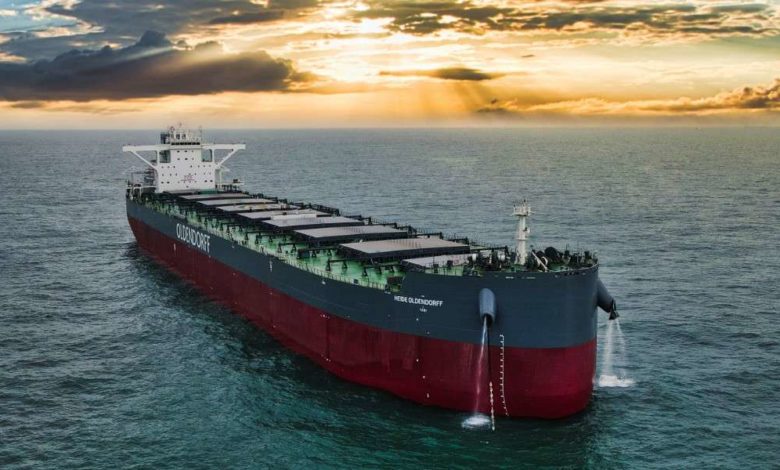Iron ore green corridor created linking Australia with East Asia

A consortium led by the Global Maritime Forum and consisting of mining giants BHP and Rio Tinto, as well as German and Greek dry bulk owners Oldendorff Carriers and Star Bulk Carriers, has inked a letter of intent to assess the development of an iron ore green corridor between Australia and East Asia.
Green corridors are described as specific shipping routes where the economics, infrastructure, and logistics of zero-or near-zero-emission shipping are more feasible and rapid deployment can be supported by targeted policy and industry action.
A report by the Getting to Zero Coalition, a partnership between the Global Maritime Forum, Friends of Ocean Action and World Economic Forum, demonstrated how green corridors can be conceived, prioritised, and designed with a pre-feasibility study for an iron ore route between Australia and East Asia. The study suggested that green ammonia is the likely fuel choice for this corridor based on favorable production conditions, an enabling regulatory environment and willing stakeholders.
Taking the study further, the parties in the consortium intend to jointly assess green ammonia supply, bunkering, and first-mover support mechanisms necessary for their participation in a viable Australia-to-East Asia iron ore green corridor. Through the work in the consortium and with inputs from the wider supply chain, the partners said they would aim to develop a framework as a preparatory step toward real-world implementation of a green iron ore shipping value chain.
“Zero-greenhouse gas emission pathways require the creation of a parallel value chain that involves new ways of working, new contractual relationships, and drives the development of decarbonised fuel production and infrastructure. This new iron ore green corridor collaboration is an important step towards enabling zero greenhouse gas emission shipping from both the supply and demand side,” said Johannah Christensen, CEO at the Global Maritime Forum.
During COP26 last November top shipping nations such as the US, Japan, Germany, Norway, the Netherlands, the UK and Australia – joined the first-ever framework to create zero-emission ocean shipping corridors, the Clydebank Declaration for clean shipping corridors. Meanwhile, others have joined, with Singapore, one of the world’s most important transshipment hubs, most recently announcing its intention to become the 23rd signatory to the green shipping pact.
In January, Splash reported on how two of the most important port pairings in global container shipping are creating a green corridor. The ports of Los Angeles and Shanghai have committed to creating a green shipping corridor on one of the world’s busiest container shipping routes.

“Iron ore green corridor”? Contradiction of terms greenwashing